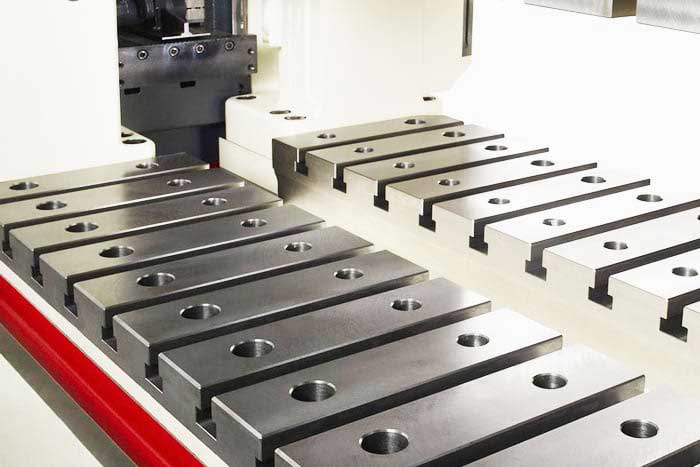That age old process was, for the longest time, seen as the only means of creating what have always been critical components.
Yet while machining remains both prevalent and productive, it has arguably been superseded by a relatively new method – metal stamping.
In utilising machinery with dies to transform flat sheet metal into custom shapes, it’s no exaggeration to say this approach has transformed an entire sector. And in conjunction with technological advancements, demand is growing.
In this article we’ll explore metal stamping of medical devices in more detail, highlighting five key benefits.
1 Accuracy
Precision is all-important when it comes to the manufacture of medical devices.
No chances can be taken when administering care, with patient safety paramount. Inaccuracies can have damaging and even fatal consequences, destroying trust and reputation alike. There can therefore be no compromise on quality.
Metal stamping runs in a highly automated fashion and in doing so generates extremely precise parts, completed with an astonishing level of accuracy. This allows exact specifications to be met in high volumes.
This is due in large part to stamping simulation technology, something we’ve written about previously.
Simulations identify flaws long before production gets underway, enabling designers to refine details and settle on both blank and trim profiles within the software itself.
In-die sensors and camera vision systems further assist in this, inspecting critical dimensions as they transition through presses. Simply put, the margin for error is greatly reduced.
The precision cutting, piercing and shaping of sheet metal is just one reason why stamping has emerged as a viable alternative to machining in recent times.
2 Cost

Another explanation for this gradual shift is the comparative cost of metal stamping against machining. The latter has always been viewed as somewhat expensive, with smaller parts often difficult to manufacture.
Stamping breaks that cycle, with the process largely automated once dies are set. This lessens the need for engineers and thus reduces labour costs.
Those savings are nearly always reflected in pricing. The upshot is OEMs generally enjoy a lower cost per part with metal stamping.
3 Speed
Moreover, OEMs can realise a far quicker return on investment. This is directly linked to stamping accelerating the manufacture of medical components.
Most professional engineering companies boast a high-speed metal stamping service, with equipment capable of thousands of strokes per minute.
This naturally lends itself to high volume production and ensures the likes of pharmaceutical companies can bring new products to market without lengthy delays.
Offering speed and accuracy in equal measure is a huge advantage.
4 Flexibility

Perhaps the biggest benefit of metal stamping however is its sheer versatility.
Lightweight and durable metal can be re-imagined in small, often minuscule sizes and all manner of complex shapes. All the while high tolerance specifications can still be adhered to.
This opens up a world of design possibilities previously off limits.
It’s perhaps no surprise to learn there has been an increase in stamped implantable components. The likes of brackets, clips and clamps intended for the human body are naturally incredibly small.
Cutting-edge microstamping equipment means they can be precision stamped to fit minute enclosures – improving design and broadening choice.
Similarly, surgical equipment, historically challenging to machine to tight tolerances, are more easily realised.
If it’s precise metal parts you seek, there really is no better alternative.
5 Quality
Finally, metal stamping affords high quality components.
Providing OEMs partner with experienced manufacturers such as Clamason, they are unlikely to face the dreaded prospect of product failure-cum-recalls.
So dependable are stamped parts they have long been deployed in the likes of jaw housings, assisting in something as complex laparoscopic surgery.
A growing number of device enclosures are also created this same way. These are nearly always made from titanium, given the material is known to resist bacterial growth and general corrosion.
Stamping technology has developed to the extent to which titanium can now be stamped as easily as steel.
Moreover, instruments manufactured in this way are wear resistant, easily sterilised and proven to retain their shape.
In summary, metal stamping is coming to dominate the manufacture of medical devices and its capabilities will only improve.
Whether for surgical instruments, casing components or implants, components manufactured this way are playing a key role in the treatment of illness and disease.
In combining speed, accuracy and value, it really is the future.
Why Clamason?
Clamason have more than seven decades of experience in stamping metal pressings.
ISO13485 and IATF16949 accredited, we have expert knowledge of medical devices and the requirements surrounding them. What’s more we are well versed in handling medical grade metals and the precise cleaning and packing requirements medical customers demand.
Our engineers collaborate with clients from the outset of a project, using advanced stamping simulation technology to inform the design phase. We also guarantee precision tooling in a quick and efficient manner, with next-to-no waste.
Once stamped, components can be cleaned and packed in safe environments, completing a full-service solution.
Why not contact our experts today?
Ever wondered how progression tooling aids medical device pressings? Find out here.
